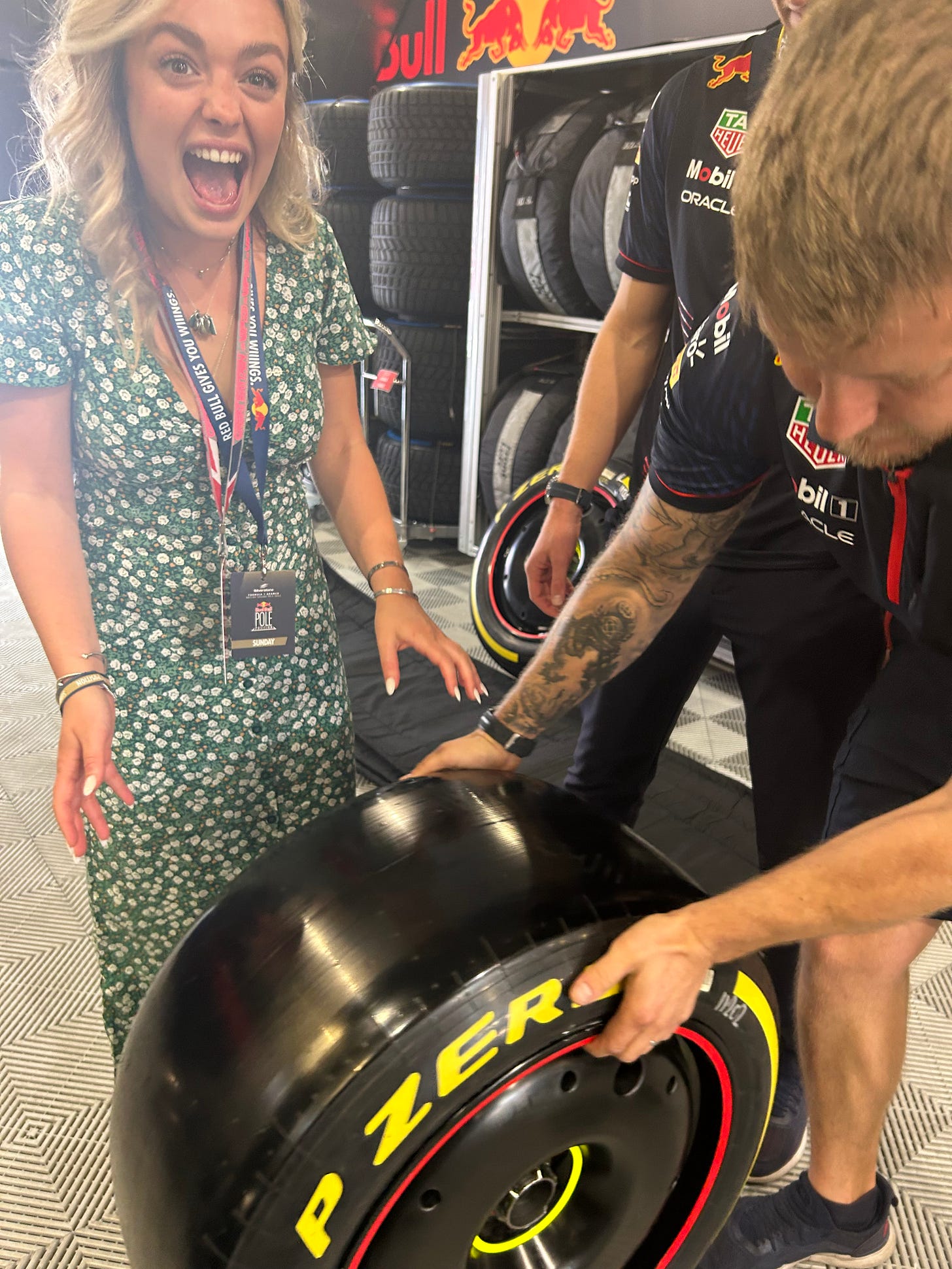Let’s pretend we’re all THIS excited about tyres!

All the tyres for F1 are supplied by PIRELLI.
There are 5 different compounds (how hard/soft the rubber is): C1(hardest),C2,C3,C4,C5 (softest).
Before each race weekend, Pirelli choose 3 compounds to provide - this will be dependent on track conditions, climate etc. For example, in hotter weather tyres suffer more degradation so a harder compound is preferred. The 3 compounds will then be colour-coded:
Red - SOFTS
Yellow - MEDIUMS
White - HARDS
There are also 2 additional wet weather tyres - intermediates (green) for damp/wetish conditions and wets (blue) for proper rain.
On a standard race weekend each driver is given 13 sets of dry weather tyres - 2 hards, 3 mediums and 8 softs. They also have 4 intermediates and 3 wets. Drivers must use at least 2 compounds in a dry weather race. In wet weather they can keep to 1 compound.
After every practise session each driver must return 2 sets of tyres. This leaves them with 7 sets left for qualifying and the race. However, if the driver makes it to Q3 in qualifying they must use a soft set of tyres and then hand them back, leaving the top 10 drivers with just 6 sets for the race. This gives the bottom 10 drivers a small advantage with an extra soft set at their disposal.
So what’s the difference between the tyres?
SOFT = the most grip, but they wear easily so won’t last long. Good for: quick qualifying laps, making moves early from the back of the grid, last minute overtakes in the final laps.
MEDIUM = grippy (ish) durable (ish). The standard compound - decent for both grip and durability, but not great.
HARD = the least grip, but they last a long time. Good for: race durability, reducing number of pitstops, abrasive track surfaces.




